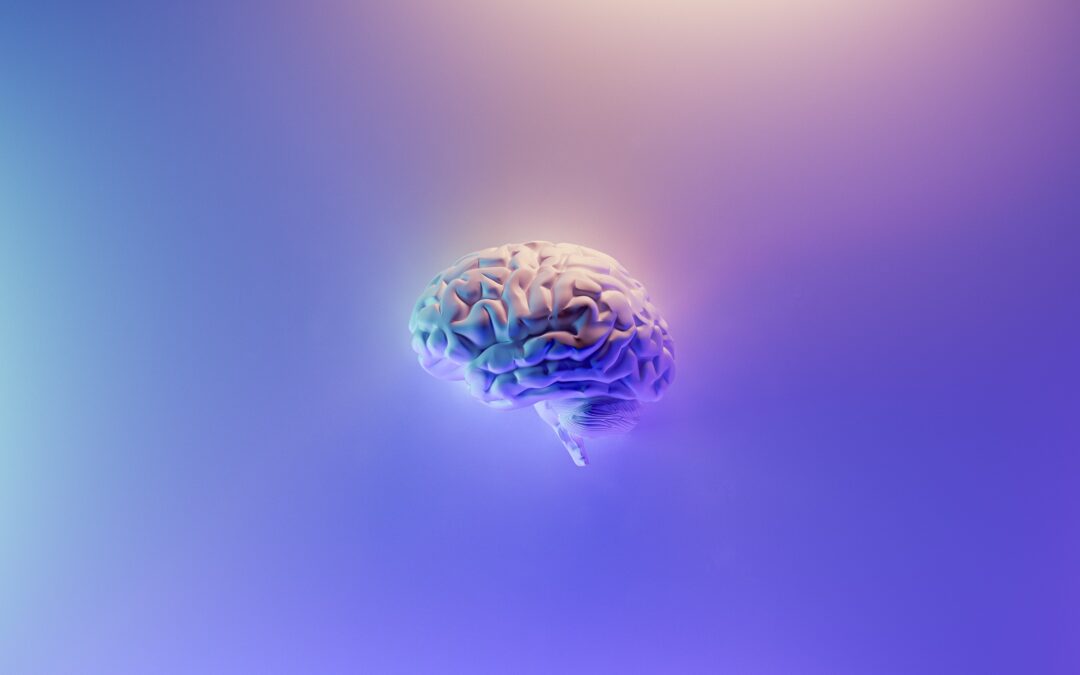Endometriosis-related pain levels are not always related to the extent of endometrial lesions. For many people, pain may not be relieved after removing the endometriosis through surgery, or hormonal treatment to suppress menstruation. Changes to the nervous system (brain, spinal cord and nerves) is one way to understand why some people don’t respond to current methods to treat their endometriosis-related pain.
- Why do I still have pain after my endometriosis surgery?
- How can I still have pelvic and period pain even though I’m using hormone therapy to suppress my cycle?
- All my test results have come back normal… so why do I still have pain?
We Need a New Understanding of Pain
Pain is defined as “an unpleasant sensory and emotional experience, associated with, or resembling that associated with, actual OR potential tissue damage.”(1)Tissue refers to your muscles, ligaments, tendons, joints, blood vessels and nerves. Decades of research (2,3) have shown that pain is always produced by the brain, not the tissues, to warn us of actual OR potential injury to our body. The “OR” is important here, because it means that we CAN have pain WITHOUT tissue injury. So even though your endometriosis is being treated, you can still experience pain. (4,5)
This is because your brain is being sent danger messages from your pelvis. Pain is produced when there are more danger signals than safety signals coming from the body. Danger signals are sent to the brain when we are getting close to tissue injury even though our tissues are still safe.6, 7.
Watch this fascinating TEDX talk that explains this concept further.
Test your pain response: Try bending your finger back until you experience pain. Your brain produces pain at that point to warn you of “potential” harm even though your tissues haven’t been injured yet. Your brain is telling you to stop. Simply, the brain rings the pain “alarm” when it feels threatened, either physically or emotionally. So, it is important to look beyond the tissues when you have a pain problem.
Endometriosis pain can involve the entire nervous system
Endometriosis pain is particularly complex because your brain places high importance on looking for threat or danger in your pelvic area, which houses essential reproductive and sexual organs and the bladder and bowel. The nerves that supply your bladder, bowel and reproductive tract are all connected and share common pathways which allow these organs to ‘talk’ to each other, which can also contribute to endometriosis-related pain.
The presence of endometrial lesions may cause inflammation of the pelvic nerves. (8,9) Over time, if this persists, the nerves in both your pelvis and your entire nervous system (the brain, spinal cord and other nerves) may become extra sensitive. (10,11) When the nerves in your pelvis become sensitive, we call this peripheral sensitisation. When the entire nervous system is involved, it is called central sensitisation.
Central sensitisation means your nervous system has become wound up and is more reactive to things that happen in and around your body. One way to understand this is to think about your nervous system like a car alarm that is programmed to be extra sensitive. Sometimes a car alarm goes off when a leaf falls onto the windscreen. For someone with endometriosis and an extra sensitive nervous system, doing something that is safe, like going for a walk, can result in increased pain.
Thoughts, emotions, and the world around us also contribute to the experience of pain (7). When we are tired, burnt out, anxious, depressed, have work stress, family stress, relationship stress, or are living through something like a global pandemic (!!), our tolerance for threat reduces, meaning pain is more easily experienced.
It is also common for women with endometriosis to experience other conditions commonly linked with central sensitisation. (12,13) These include irritable bowel syndrome, painful bladder syndrome, chronic fatigue syndrome, fibromyalgia, migraines or tension headaches, anxiety or panic attacks and depression.
What can be done to calm down your sensitive nervous system and reduce pain?

1. Learn about pain
When we don’t understand pain, we become very fearful of it. Fear of hurting ourselves, or fear of doing something that will make the pain worse sensitises our system further. Unfortunately, fear makes pain intensify, as it puts our bodies on high alert and sets the alarm off.
Many studies have found that if you deepen your understanding of pain and how it relates to your story, it can help to reduce pain. (6, 14, 15) Educating yourself about what is causing your pain and what can be done about it is extremely empowering, and a very important part of the treatment program for endometriosis related pain.
To learn more about the science of pain, watch this You Tube video called Tame the Beast.
2. Motion is Lotion
Exercise and movement have many benefits beyond physical fitness. They help boost endorphins (our brains’ ‘happy chemicals’), regulate sleep, improve energy and mood, and calm the nervous system down. (16)
When starting to exercise and move more, it is important to pace yourself. Starting small and gradually increasing over time is the best way to get active. Choose exercise that you enjoy, trying to involve your whole body. Movement doesn’t have to be strenuous, it can also be gentle. Think of having a ‘balanced diet of exercise’, which means doing a combination of different types of exercise which helps keep the nervous system interested and calm. (17)
A Pelvic Health Physiotherapist can guide you on what exercises are safe and effective for your pelvis, pelvic floor, abdominal muscles and nervous system.
3. Prioritise Sleep
Sleep is your superpower. During sleep, the pituitary gland in the brain releases hormones that turbo charge the maintenance and repair of our internal tissues and muscles. Our immune system also produces crucial proteins that help fight disease and aid recovery from illness.
Sleep influences all of the body’s major physiologic systems, including thermoregulatory, musculoskeletal, endocrine, respiratory, cardiovascular, gastrointestinal, and immune systems. Sleep impacts a person’s weight, mental health and overall quality of life. Recent research has demonstrated a link between insomnia and chronic pain. (18)
Prioritising sleep can make a big difference to your pain experience. Sleep should not be considered an optional luxury, it should be considered an essential pillar of health.
To learn tips about how to improve sleep, visit this ‘Sleep: Your Superpower’ blog.
4. Calm Your Mind And Body With Meditation Or Mindfulness
Many studies have found that regular practice of meditation or mindfulness have a positive effect on multiple aspects of health, including reducing persistent pain. (19,20) Doing mindfulness or meditation helps to wind down our nervous system by transitioning our bodies from a hyper-vigilant / high alert state to a calm and relaxed state.
If you are new to Mindfulness or Meditation, Smiling Mind or Insight Timer are free apps, and a great place to start.

5. Healthy Diet
What you eat directly affects the structure and function of your brain and has a profound impact on your mood, immune and inflammatory responses and can also affect your experience of pain. 21 For example, plant-based diets or diets low in refined sugars have been shown to help improve pain. (21)
Many links have been made between what people eat, how they behave, and the types of gut bacteria they have (21). Good gut bacteria influence what your gut digests and absorbs, the degree of inflammation throughout your body and has a positive impact on your mood, energy levels and pain. Serotonin is a neurotransmitter that regulates sleep, appetite and mood and helps to inhibit pain. 95% of our serotonin is produced in the gastrointestinal system. So, the gut doesn’t just help your digestion, it also guides emotions and pain responses.
For more information on this, listen to this great podcast discussing nutrition and chronic pain.
It is also common for women with endometriosis to experience symptoms of irritable bowel syndrome, which can be managed through a range of treatments, including dietary modification. One of these is the FODMAP diet. For more information, read this blog.

6. Establish a team of health care providers to help you understand and manage your pain
A multidisciplinary team, which, in addition to your gynaecologist and general practitioner, may include other specialist doctors (eg pain physician, gastroenterologist, urologist, colorectal surgeon) and allied health practitioners (eg pelvic health physiotherapist, psychologist, dietician, exercise physiologist). Your team can support you to improve your endometriosis related pain. (19)
A pelvic health physiotherapist can help you understand your pain and how your nerves, muscles, thoughts and feelings and the world around you are influencing your pain experience. They will work with you to calm down the sensitivity in your nervous system by exploring the suggestions (1-5) above, improve the function of the muscles and joints in and around your pelvis as this may benefit your overall health and wellbeing.
Source: https://www.mindmapart.com/health-mind-map-jane-genovese/
References
1. Raja SN, Carr DB, Cohen M, Finnerup NB, Flor H, Gibson S et al. The revised International Association for the Study of Pain definition of pain: concepts, challenges, and compromises. Pain 2020 Sep 1;161(9),1976-1982, doi: 10.1097/j.pain.0000000000001939.
2. Moseley GM and Butler DS. Fifteen Years of Explaining Pain: The Past, Present, and Future. The Journal of Pain, 2015, Vol 16(9), pp 807-813
3. Woolf CJ. Central sensitization: Implications for the diagnosis and treatment of pain. Pain. 2011, 152(3 Suppl): S2–15. doi:10.1016/j.pain.2010.09.030.
4. Abbott, J Hawe J, Hunter D, Holmes M, Finn P and Garry R. Laparoscopic excision of endometriosis: a randomized, placebo-controlled trial. Fertility and Sterility, 2004, 82(4), 878-884
5. Hsu AL, Sinaii N, Segars J, Nieman LK, and Stratton P. Relating Pelvic Pain Location to Surgical Findings of Endometriosis. Obstet Gynecol. 201, 118(2 Pt 1), 223–230. AOG.0b013e318223fed0
6. Moseley G & Butler DS. (2017) Explain Pain Supercharged: The Clinician’s Manual. Published: NOI Group Publications. ISBN: 978-06480227-0-1
7. Moseley GL. Reconceptualising Pain According to Modern Pain Science. 2007. Physical Therapy Reviews 2007; 12: 169–178
8. Maddern J, Grundy L, Castro J and Brierley SM. Pain in Endometriosis. 2020 Front Cell Neurosci; 14. DOI 10.3389/fncel.2020.590823
9. McNamara HC, Frawley HC, Donoghue JF, Readman E, Healey M, Ellett L et al. 2021 Peripheral, Central, and Cross Sensitization in Endometriosis-Associated Pain and Comorbid Pain Syndromes: Frontiers in Reproductive Health. 3: DOI: 10.3389/frph.2021.72642
10. Zheng P, Zhang W, Leng J and Lang J. 2019 Research on central sensitization of endometriosis-associated pain: a systematic review of the literature. Journal of Pain Research. 12: 1447-1456
11. Nijs J, George SZ, Clauw DJ, Fernández-de-las-Peñas C, Kosek E, Ickmans K et al. Central sensitisation in chronic pain conditions: latest discoveries and their potential for precision medicine. Lancet Rheumatol. 2021, 3:e383-92
12. Yong PJ, Williams C, Behaiwy MA and Allaire C. 2020 A Proposed Platform for Phenotyping Endometriosis-Associated Pain: Unifying Peripheral and Central Pain Mechanisms. Current Obstetrics and Gynecology Reports. 9:89-97
13. Orr NL, Wahl KJ, Noga H, Allaire C, Williams C, Bedaiwy MA et al. 2020 Phenotyping Sexual Pain in Endometriosis Using the Central Sensitisation Inventory. J Sex Med. 17:761-770
14. Louw, A., I. Diener, et al. (2011). “The Effect of Neuroscience Education on Pain, Disability, Anxiety, and Stress in Chronic Musculoskeletal Pain.” Archives of Physical Medicine and Rehabilitation 92(12): 2041-2056.
15. Louw A, Zimney K, Puentedura EJ and Diener I. The efficacy of pain neuroscience education on musculoskeletal pain: A systematic review of the literature. Physiotherapy Theory and Practice, 2016, 32:5, 332-355, DOI: 10.1080/09593985.2016.1194646
16. Booth J, Moseley GL. Exercise for chronic musculoskeletal pain: A biopsychosocial approach. Musculoskeletal Care, 2017;1–9.
17. Wang C, Schmid CH, Rones R, Kalish R, Yinh J, Goldenberg DL et al. Randomized Trial of Tai Chi for Fibromyalgia. N Engl J Med. 2010, 363(8), 743-754
18. Wiklund T, Gerdle B, Linton SJ, Dragioti E, Larsson B. Insomnia is a risk factor for spreading of chronic pain: A Swedish longitudinal population study (SwePain). Eur J Pain. 2020;00: 1–9.https://doi.org/10.1002/ejp.1582
19. Allaire C, Aksoy T, Bedaiwy M, Britnell S, Noga HL, Yager H et al. 2017 An interdisciplinary approach to endometriosis-associated persistent pelvic pain. J Endometr Pelvic Pain Disord; 9(2): 77-86
20. Zeidan F, Emerson NM, Farris SR,1 Ray JN, Jung Y, McHaffie JG et al. Mindfulness Meditation-Based Pain Relief Employs Different Neural Mechanisms Than Placebo and Sham Mindfulness Meditation-Induced Analgesia. The Journal of Neuroscience, 2015, 35(46):15307–15325
21. Elma Ö, Yilmaz, Deliens T, Coppieters I, Clarys P, Nijs J et al. Do Nutritional Factors Interact with Chronic Musculoskeletal Pain? A Systematic Review. J. Clin. Med. 2020, 9, 702; doi:10.3390/jcm9030702
Written by,
Pelvic Physiotherapist, Shan Morrison

